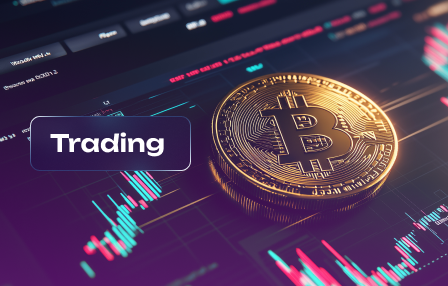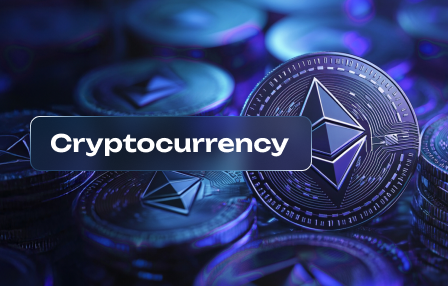The Hidden Risks of OTC Trading You Should Know
February 26, 2025
To safeguard your investments, grasp strategies that expose hidden pitfalls in decentralized markets. Evaluate each transaction meticulously, as a lack of clear regulations can mask potential fraud and lead to significant losses.
Being aware of market trends is crucial; always analyze how external factors influence pricing. Conduct thorough research on counterparties to mitigate risks associated with anonymity and limited oversight.
Implementing robust risk management strategies will enhance your resilience against unforeseen challenges. Maintain a diversified portfolio to cushion potential impacts from volatile price movements within these less regulated environments.
Consider leveraging advanced analytical tools to uncover discrepancies and avoid traps set by unscrupulous actors. Continuous education and vigilance are your best allies in this complex financial landscape.
Market Manipulation Tactics
Be vigilant. Awareness of market manipulation techniques is crucial for navigating less regulated environments. Manipulators often employ a variety of strategies that exploit vulnerabilities in pricing and trading behavior.
Watch for pump and dump schemes. This involves artificially inflating asset prices through misleading information, followed by a sell-off when prices peak. Traders must scrutinize unusual volume spikes and sudden price surges that lack fundamental support.
Monitor for wash trading. This tactic consists of buying and selling the same asset to create misleading activity levels. It gives an illusion of liquidity, attracting unsuspecting investors. Stay alert for patterns that indicate such fraudulent activities.
Understand spoofing practices. Here, traders place large orders without intent to execute them, manipulating the market perception. Recognizing false buy or sell orders can help identify and avoid traps set by experienced manipulators.
Regulatory compliance matters. Familiarize yourself with existing laws governing market behaviors. Knowing regulations can aid in identifying illegal tactics and protecting oneself from potential fraud.
Research hidden risks. Delve into the backgrounds of assets and projects. Transparency is key; projects lacking clear information or history may pose higher threats of manipulation. Validate sources before making decisions.
Educate yourself continuously. Market dynamics shift frequently. Staying informed about emerging manipulation tactics enhances one’s ability to navigate risks effectively. Utilize reputable resources for updates on new schemes and protective measures.
Lack of Regulation Insights
Be aware that the absence of oversight in this market can hide significant dangers. Strategies employed by participants may lack transparency, leading to situations where fraud can flourish without repercussions. Always scrutinize counterparties and their practices to avoid falling victim to deceptive schemes.
Without regulatory bodies enforcing rules, market manipulation tactics become prevalent. Participants may coordinate trades to create artificial price movements, misleading investors. Ensure you conduct thorough due diligence on all involved parties and seek out verified track records.
Hidden fees and costs can also erode potential profits. Some traders might not disclose full transaction expenses, making it challenging to assess true profitability. Request detailed breakdowns of any proposed deals before proceeding.
Risk management is paramount; develop a robust strategy to mitigate potential losses. Use stop-loss orders judiciously and consider diversifying your portfolio to spread exposure across various assets. This approach minimizes vulnerability to sudden market shifts.
Networking within legitimate communities can provide insights into reliable practices and resources, helping to navigate this complex environment. Share experiences with seasoned investors to uncover common pitfalls and successful methodologies.
Counterparty Risk Analysis
Focus on thorough research of counterparties before engaging in any transaction. Assess their reputation, financial stability, and past performance to mitigate potential fraud.
- Verify the identity of counterparties through KYC (Know Your Customer) processes.
- Evaluate credit ratings from reliable agencies to gauge financial health.
- Utilize blockchain technology for transparency in transactions, allowing for real-time tracking.
Implement risk management strategies tailored to specific market conditions. This includes:
- Setting transaction limits based on counterparty reliability.
- Diversifying trades among multiple counterparties to reduce exposure.
- Regularly monitoring market trends and counterparties’ actions for hidden risks.
Stay informed about industry regulations that influence counterparty interactions. Compliance with these rules can significantly diminish risks associated with fraudulent activities.
- Keep abreast of changes in laws affecting market operations.
- Participate in forums or networks that discuss best practices and share insights on risks.
Cultivating relationships with trustworthy entities can provide additional layers of security. Building a network of credible partners fosters transparency and reduces uncertainty within transactions.
Liquidity Issues Explained
Always assess liquidity before engaging in transactions. Low liquidity can lead to substantial price slippage, where executed prices diverge from expected rates. This phenomenon can result in increased costs and unexpected losses.
Market depth is a critical factor; shallow markets often experience rapid price fluctuations due to minimal trading volume. During volatile periods, the lack of buyers or sellers can exacerbate this issue, making it challenging to execute trades without affecting market prices significantly.
Strategies involving illiquid assets pose unique challenges. Selling such securities requires meticulous timing. Attempting to offload large volumes may trigger panic selling, further driving down prices.
Fraudulent schemes frequently exploit liquidity gaps. Unscrupulous actors may engage in wash trading or pump-and-dump tactics, artificially inflating asset values to attract uninformed investors. Vigilance is essential; always verify the legitimacy of market participants.
Monitoring regulations is paramount. Inadequate oversight can lead to exploitation of illiquid markets, where participants may face heightened risks without adequate recourse. Strong regulatory frameworks help mitigate these vulnerabilities by promoting fair practices and transparency.
Adopting a risk-aware mindset will aid in navigating potential pitfalls associated with liquidity issues. Consider utilizing limit orders instead of market orders to maintain control over execution prices, especially in less liquid environments.



